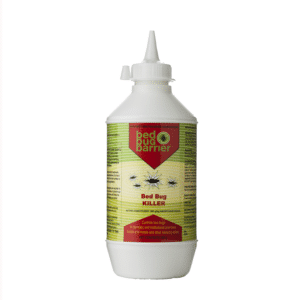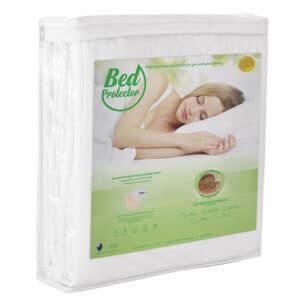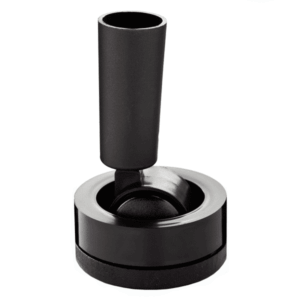
A bed bug infestation can be a homeowner’s greatest nightmare. Not only do these pesky insects cause physical pain through their bites, which can lead to allergic reactions and potentially even insomnia, but they can also create a lot of anxiety and stress for the whole family.
Eliminating bed bugs as soon as possible should always be a top priority for homeowners, as a severe infestation can be challenging to overcome and damage your family’s health. That’s why we’ve created a comprehensive guide to DIY bed bug treatment for homeowners. This article will provide all the information you need to protect your home and loved ones from these unwanted pests.
Bed bug infestations are on the rise in Australia, with more and more people seeking solutions to rid their homes of these tiny, blood-sucking creatures. Professional pest treatment can be quite costly and may not even guarantee a complete eradication of the infestation. Additionally, many homeowners are concerned about exposing their families to harsh chemicals, often used in professional extermination techniques, which can cause further health problems, especially for babies, pets, and people with allergies or asthma. That’s where DIY bed bug treatment options come into play, offering a more affordable and potentially safer method of controlling bed bug populations within your home.
In this article, we’ll discuss the various DIY bed bug treatment methods available to homeowners, as well as provide guidance on how to effectively use these treatments to combat infestations. We will also delve into preventative measures to avoid future bed bug infestations, and answer common questions surrounding these pesky insects. By the end of this guide, you’ll be well-equipped to safeguard your family’s health and maintain a bed bug-free home.
Identifying Signs of a Bed Bug Infestation
The first step towards protecting your family’s health from bed bugs is detecting their presence early on. Bed bugs are small, flat, and oval-shaped insects, with adults measuring about 5-7mm in length. They are usually reddish-brown but turn a more reddish colour after feeding. Here are some tell-tale signs of a bed bug infestation in your home:
- Bite marks on the skin: Bed bugs feed on human blood, causing red, itchy, and sometimes painful welts on the skin. These bites are often in a line or cluster, typically occurring during the night while you’re sleeping.
- Bloodstains on bed linen and clothing: As bed bugs feed, they may leave small specks of blood on your sheets, pillowcases, and other sleeping areas.
- Unpleasant odour: Bed bugs release a unique, musty smell which can be detected in infested areas, typically described as a sweet, musty scent.
- Excrement and shed skins: If you notice tiny black spots or brownish-yellow shed skins on your mattress or furniture, this could be an indication of a bed bug infestation.
DIY Bed Bug Treatments
Once you’ve identified the signs of a bed bug infestation, it’s time to take action to eradicate these pests. There are a range of DIY treatment methods available for homeowners, and we’ll cover the most effective options below:
- Heat treatment: Bed bugs are extremely sensitive to high temperatures, making steamers an efficient way to kill both the bugs and their eggs. Use a quality bed bug steamer, such as the Bed Bug Steamer available at Bed Bug Barrier, to treat mattresses, bedding, furniture, and other infested areas, ensuring that you thoroughly cover all cracks and crevices.
- Pesticide-free powders: Non-toxic, pesticide-free bed bug killer powders, like the Bed Bug Killer Powder from Bed Bug Barrier, can be applied to carpets, furniture, and other surfaces, effectively eliminating bed bugs and preventing future infestations. These powders work by damaging the bed bug’s exoskeleton, causing them to dehydrate and die.
- Vacuuming: Regularly vacuum your home to remove any bed bugs and their eggs hiding in carpets, furniture, and floor crevices. Make sure to properly seal and dispose of the vacuum cleaner bag or empty the vacuum canister immediately after cleaning to avoid the risk of bed bugs escaping and re-infesting your home.
- Mattress and pillow encasements: Protect your bed by using specially designed bed bug-proof mattress and pillow encasements. These encasements trap bed bugs and prevent them from feeding on you or laying their eggs, eventually causing the trapped bugs to die.

Bed Bug Killer Powder

Bed Bug Proof Mattress Cover

Floor Barrier
Preventative Measures To Keep Bed Bugs at Bay
To reduce the chance of a bed bug infestation in your home, consider the following preventative measures:
- Regularly inspect your home: Make a habit of inspecting your home for signs of bed bugs, especially after travelling or having overnight guests. Check all possible hiding spots, including mattresses, bedding, furniture, luggage, and clothes.
- Maintain a clean and clutter-free environment: Bed bugs love hiding in clutter, so keep your home tidy to reduce their hiding spots. Wash your bedding weekly and vacuum your home often, making sure to address all potential hiding areas.
- Be cautious when travelling: When staying in hotels or other accommodations, inspect the room for signs of bed bugs. Keep your luggage off the floor and use plastic bags to separate dirty clothes. On returning home, wash and dry all clothing on high heat to kill any hitchhiking bed bugs.
- Consider professional help: While DIY treatments can certainly be effective, they may not be enough to eliminate a severe infestation. If you continue to see signs of bed bugs despite your efforts, it may be necessary to call in professional pest exterminators for a more thorough treatment.
Frequently Asked Questions
In this section, we’ll address some frequently asked questions about bed bugs:
- Can bed bugs spread disease?
Although bed bugs feed on human blood, they are not known to transmit any diseases to humans. However, their bites may cause allergic reactions in some people, leading to itching, swelling, and discomfort. - How do bed bugs enter the home?
Bed bugs can be introduced into your home through various means, such as hitching a ride on luggage, clothing, or furniture, or being brought in by visitors or pets. - How long do bed bugs live?
Bed bugs have an average lifespan of 6-18 months but can survive without feeding for 12 months, making it essential to address infestations as soon as possible.
Conclusion
Safeguarding your family’s health from bed bugs requires vigilance, timely intervention, and an integrated approach to prevention and treatment. By following this comprehensive guide to DIY bed bug treatment for homeowners, you can take all the necessary steps to protect your home and loved ones.
Remember that early detection is crucial, and be prepared to call in professional help if needed. With the right tools and knowledge, you can create a bed bug-free sanctuary for your family. Check out organic product range at Bed Bug Barrier now.
Are You Looking for an Organic DIY Treatment?
Watch Our DIY Treatment Video For An Ensemble Bed
Watch Our DIY Treatment Video For A Bed with Slats



Leave a Reply